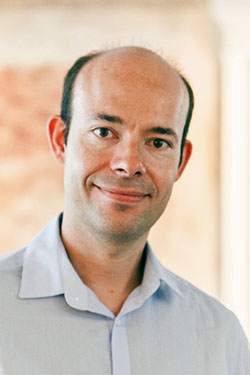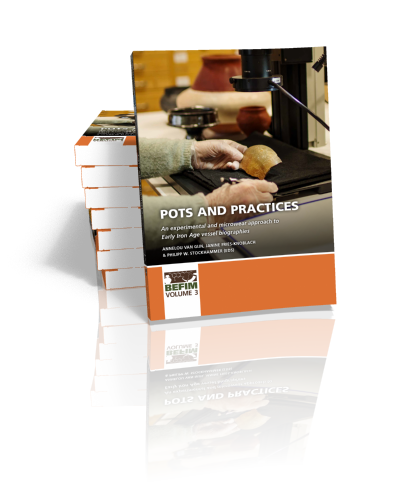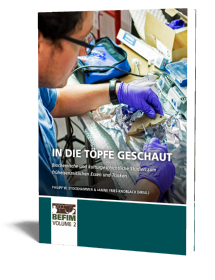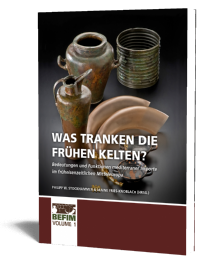Abstract:
This third volume of the BEFIM series addresses the life history of vessels from the Early Celtic hillfort settlements of Heuneburg and Vix-Mont Lassois, from a detailed examination of the manufacturing process to the use and modifications of the final products. Pivotal was an extensive experimental program of dozens of experiments directed at a better understanding of the way this pottery was made and used.
The participation of an experienced potter allowed us to reproduce exact replicas of the different wares and explore in detail the traces of production and the effect of temper, baking temperature and so forth on the development of production traces and wear. Especially variations in the temper material, like the frequently observed addition of calcite in the archaeological pottery, strongly affected the characteristics of the use wear traces that subsequently developed from the preparation of different products (grape wine, honey wine, different kinds of porridge etc.).
The effect of alcohol production, including fermentation, on the pottery was also explored. We also tested the effect of different gestures of preparing food and drink (mixing, stirring, pounding), different ways of storage and handling, and the manner of consumption like decanting using various kinds of utensils.
The traces we observed on the experimental vessels, using an integrated low and high power approach, formed the basis for our interpretation of the archaeological wares from the Heuneburg and Vix-Mont Lassois. Our data on the life history of the pottery added to a more detailed insight into foodways, including drinking habits, of the Early Celtic communities of Central Europe. This book presents in detail the experimental program and the archaeological observations.
This is part 3 of the BEFIM project publication series, click here to see the other available volumes
Contents
Vorwort – Foreword – Préface
Annelou van Gijn and Philipp W. Stockhammer
Introduction
Annelou van Gijn
Experimentally forming Celtic vessels from the Heuneburg: a sequential approach
Loe Jacobs
Studying the life history of vessels: creating a reference collection for microwear studies of pottery
Annelou van Gijn, Nicole de Koning, Tessa Timmer, Fiona Vernon and Annemieke Verbaas
Ceramic permeability experiments: exploring the role of surface treatment
Annemieke Verbaas and Annelou van Gijn
Microwear studies of pottery from the Iron Age site of the Heuneburg (Germany)
Annelou van Gijn and Annemieke Verbaas
Microwear studies of pottery from the Iron Age site of Vix/Mont Lassoix (France)
Annemieke Verbaas and Annelou van Gijn
Abrasion and inebriation: investigating the application of use-wear analysis in studies of alcohol production
Nicholas Groat
Microstructural investigation of the Heuneburg ceramic assemblage
Dennis Braekmans


Prof. dr.
Annelou van Gijn
Annelou van Gijn is professor of Archaeological Material Culture and Artefact Studies at Leiden University and studied anthropology and archaeology at Washington State University Pullman (US) and the University of Groningen. She obtained her PhD at Leiden University. Her teaching and research focus on prehistoric technology, ancient crafts, experimentation and the reconstruction of the cultural biography of objects, topics on which she published widely.
read more


Prof Dr.
Philipp W. Stockhammer
Philipp W. Stockhammer is professor for prehistoric archaeology with a focus on the Eastern Mediterranean at Ludwig-Maximilians-University (LMU) Munich and co-director of Max Planck-Harvard Research Center for the Archaeoscience of the Ancient Mediterranean, Jena.
read more


Dr.
Janine Fries-Knoblach
Janine Fries-Knoblach studied prehistory, ancient history, classical and provincial-Roman archaology in Munich and Oxford and worked for heritage authorities and as a lecturer at the universities of Erlangen, Würzburg, and Freiburg. She spent much time editing and translating and was project coordinator of BEFIM at Ludwig-Maximilians-University (LMU) Munich from 2016-2018.
read more














